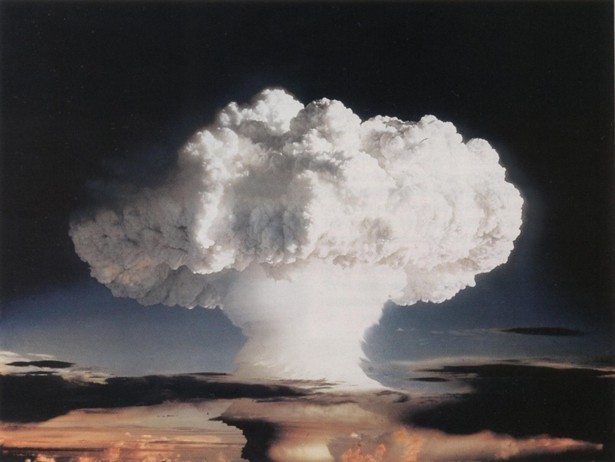The uses of hydrogen are listed here in both the gaseous form and elemental applications.
Hydrogen is available as natural gas in the atmosphere. But when isolated in pure form, it is highly inflammable.
Further, it is also available in the form of isotopes like deuterium, tritium, etc. All these properties of hydrogen contribute to its uses.
Important Uses of Hydrogen

- Gas welding
- Automobile fuel.
- In petroleum refinery
- Ultraviolet lamps
- Production of electricity
- As a reducing agent
- Potentiometry and Chemical analysis
- Structural identification
- In gas chromatography
- In hot balloons
- Rocket fuel for space programs
- Mass destructive bombs
Hydrogen is the first element in the periodic table, with an atomic number of 1 and a weight of 1.008.
It is also part of many biomolecules like carbohydrates, proteins, fats, etc. So, it has a wide variety of applications.
1. Gas welding

- Hydrogen gas is one of the gases used for the welding process.
- It is used to join metals as it can generate a high temperature of 4000°C.
- This high temperature leads to the melting of metals.
- The molten metals cool down and fuse, joining the broken surfaces.
- Besides generating heat, hydrogen also acts as a shielding gas.
- Metals are highly reactive at high temperatures and can react with other elements like nitrogen and carbon.
- Hydrogen prevents the metal from reacting with other elements during the process.
This process is also called atomic hydrogen welding.
2. As fuel for automobiles

- Hydrogen fuel is a zero-emission fuel that burns in reaction with oxygen.
- Though battery technology EV vehicles are gaining popularity, this technology cannot be reliable for airplanes and helicopters.
- So, for aviation fuels, hydrogen fuel cell technology is being explored instead of petroleum fuels.
- The advantage of this technology is the lack of air pollution, as no harmful gas is emitted by ignition.
- Hydrogen fuel cell technology is also used in submarines, bikes, etc.
3. In a petroleum refinery
- Hydrogen gas is widely used in the petroleum industry to remove sulfur content.
- Besides, it is also used for the process of hydroisomerization, wherein normal paraffin is converted to isoparaffin.
- It is also employed for dearomatization to convert aromatic to cycloalkanes.
- Also, hydrocracking breaks long-chain hydrocarbons into shorter ones.
4. Ultraviolet lamps
- Hydrogen gas in the form of deuterium (D2) is used in deuterium arc lamps.
- These lamps are used to produce ultraviolet light.
- These lamps have a tungsten filament, which generates heat.
- The heat in the bulb excites the deuterium atoms (D²), which produce light in the ultraviolet region. These lamps are used explicitly in spectroscopic analysis in labs.
5. In chemical analysis
- Hydrogen is used for chemical analysis in potentiometry and atomic absorption spectroscopy.
- In potentiometry, it is used as Hydrogen electrodes for titrations.
- Here, hydrogen gas is passed at a constant speed at one atmospheric pressure into the reference electrode.
- The purity of the hydrogen can affect the analysis of these potentiometric titrations.
- In atomic absorption spectroscopy, it is used as fuel to generate heat.
- The ability of hydrogen to ignite is used in producing neutral atoms in the process.
6. In structural identification of compounds

- Many compounds have complex chemistry.
- Different methods are used to study the structure and the nature of bonds between atoms and molecules.
- Nuclear magnetic resonance (NMR) is one of the techniques which exploits the proton character to define the molecular structure.
- The technique is also called proton NMR.
- The presence of hydrogen in many bio-molecules is utilized for this purpose.
Hence the presence of hydrogen is exploited for structural identification.
7. Gas chromatography
- Hydrogen is one of the gases which can be used as a mobile phase in gas chromatography.
- This method is used to separate volatile substances from a mixture for identification.
8. As a reducing agent
- Hydrogen acts as both an electro-negative and electropositive element.
- This electro-positive nature makes it useful in redox reactions.
- The addition of hydrogen in a chemical reaction is termed reduction, while removal is called oxidation.
9. Deuterium for electricity generation
- As already seen before, the isotope of hydrogen is used to make heavy water (D2O).
- This heavy water is used in nuclear reactors as a coolant and also as a nuclear moderator to slow down the neutrons.
10. In balloons
One of the first uses of Hydrogen gas was in flying hot balloons in the air.
Due to its lightweight, low cost, hydrogen gas was used in air balloons for flight.

- However, due to its explosiveness, it is being replaced by helium.
- Helium is a stable gas and also one of the members of monoatomic elements.
- Unlike hydrogen, it is highly non-reactive.
11. As rocket fuel for space programs
- Hydrogen is used as the signature fuel for the American space program.
- It is a powerful propellant for rockets. It has the lowest molecular weight and is said to burn with extreme intensity.
- In combination with oxygen, it is said to yield the highest specific impulse in relation to the amount of fuel consumed.
12. In mass destructive bombs
- This may not be the use of humans except for destruction.
- But it has been developed as a powerful weapon of mass destruction.

- It relies on the principle of nuclear fusion of hydrogen atoms isotopes.
13. Hydrogen peroxide
- This is a hydrogen compound in combination with oxygen as H2O2.
- Hydrogen peroxide is a routine sterilizing agent used in clinics and hospitals.
- It is primarily used for cleaning wounds, cuts, and other damaged tissue portions.
- Besides, in chemistry, you will learn about hydrogen bonds, which are weak forces of attraction between molecules.
- It uniquely combines with oxygen and, to a small extent, with nitrogen atoms to produce these attraction forces.
- In research, it is also used for testing the anti-oxidant potential of enzymes like catalase.
The opening paragraphs state that hydrogen occurs in the terrestrial atmosphere.
This is incorrect, the mass of the hydrogen molecule is too low for it to be retained by the Earths’ gravity, and it diffused into space aeons ago. Helium suffered much the same fate.
To be clear, the atomic number is 1, an integer, the atomic weight is 1.008, not to be confused with the molecular weight (of two atoms combined), which is 2.016. It is quite usual to quote 1 and 2. These numbers are in relation to the atomic weight of oxygen 16.0000.
Hi, Thanks for your inputs.
Sorry, but hydrogen is not a future fuel. Too much cost & environment impact producing it, then compression, transport, distribution, then burning it.
Highly explosive, & highly flammable, burns with invisible flame, so special detectors needed. Leaks too readily due to molecule size so needs seals, vessels, pipejoints, leak detectors etc. Gas tanks lined with Kevlar!
Hi Guard, thanks for your opinion. Now we are moving towards electric charged battery automobiles like cars, bikes, buses etc., but it would not be possible to run aero planes on charged battery and hence hydrogen as fuel is under research. However, the points you have raised against its use is quite true.
How or where can I get a Hydrogen regulator checked out?
@ed scheffert, from amazon or other online stores you will find many options
Who is the Author
@Sunday Mary! Please consider the author name as ranga.nr
What properties in hydrogen make it useful? (5 points please)
Hydrogen could be manufactured on a floating platform in the sea (perhaps using water from desalination). The oxygen produced could be used for hypoxic dead zones. I think many countries would be prepared to pay for a solution to the dead zones and you would then have hydrogen left over after using the oxygen. Countries are also trying to get rid of salt left over from desalination.
So here is an idea that will help get rid of the salt, will produce hydrogen and will reduce dead zones (and countries might pay you for this):
Idea:
Have a large white floating platform in the sea. This will prevent solar energy from heating the sea below it. A solar powered heat pump on the platform could be also be used to cool the seawater below it. Add about 3 grams of salt per litre to the cool water below the platform to make the water more dense and also aerate the cool water below the platform by blowing air or oxygen into it. The denser aerated water will sink to the dead zone.
NOTE Cooler water holds more dissolved air and oxygen. Adding salt slightly decreases air solubility. If you start with a sea temperature of 20 deg C and salinity of 35 g/kg the density is 1024.48 kg/cubic metre. If you decrease the temperature to 17 deg C and increase salinity to 38 g/kg the density increases to 1027.8 kg/cubic metre. The solubility of oxygen will increase from 7.38 to 7.67 mg/litre.
Hello, I am thankful hear about the usage of hydrogen. If anyone can help to find out, can the electricity be converted to hydrogen gas? If yes, definitely it can be used for running automobiles. I am interested to know the efficiency of conversion of energy from electricity to gas. Then what are the amount of losses, and other pros and cons? Further, the technical references of such utilization in the world.
@Lachu Man Dhungyel! do you mean you wish to convert energy in desired mass? E=MC2 holds that mass and energy can be incontrovertible. But may be such phenomenon is out of current technical scope. However you can extract hydrogen from water by electrolysis. Check out https://www.energy.gov/eere/fuelcells/hydrogen-production-electrolysis
hi I’m a student learning about the everday uses of hydrogen. what are they?
@Leah! As you mentioned, you are right in saying that not all of them are used in daily life. But hydrogen is used on daily basis in petroleum industry, in gas welding and also in research labs for chemical analysis. And if you wish to know daily uses for common man, then it would quite hard. Because hydrogen in explosive and also finds few uses in routine life.
hi I’m a student trying to learn about everday uses of hrdrogen. your facts were not exactly everday uses. what elese is hydrogen used for.
I need only two lines but it’s so big and thanks.
need it in short points
nice though
it is good.but i need more information.
hello im a student learning about the periodic table and i saw an error in you facts about hydrogen.Hydrogen has the atomic number 1 not 2 please correct you mistake for it will confuse other students in the future, please and thank you.
@noah! Good to have your comment. By the way we did mention it as atomic number 1 and atomic weight as 2. In-fact the atomic number is correct and is 1. But the weight is not 2 but approximately 1.008 as per IUPAC.
Thanks for the correction. regards